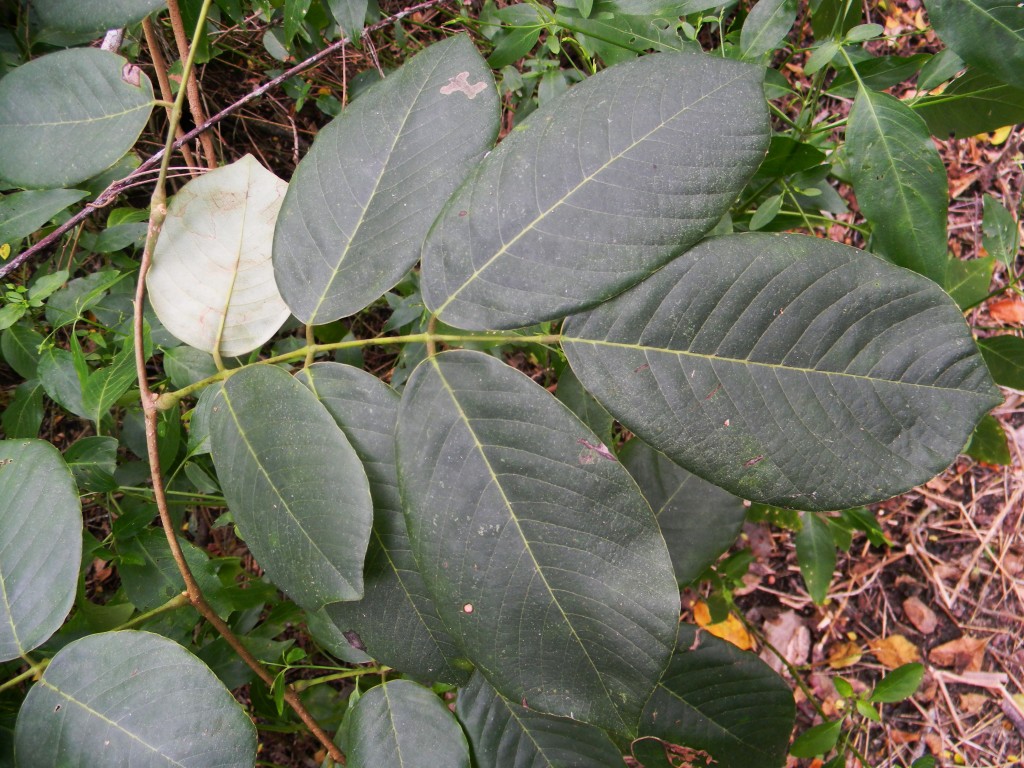Jamaica Dogwood
(Fishfuddle Tree)
Piscidia piscipula
Plant Family: Leguminosae
Leaves: Alternate, once-compound, with 5 to 11 oval leaflets, the leaflet margins often turn under; rachis and leaflet stems are yellow. The leaves are gray-green above and whitish gray beneath.
Bark: Light gray, smooth on young trees, becoming rougher on older trees.
Flowers: Pea-like, white to pink, held on stalks in long upright clusters; seen in spring.
Fruits: A green pod that ripens to brown, with four wings, up to 10 cm long, containing reddish brown oval seeds; late summer to fall.
Habitat: Coastal woods and hammocks.
Growth Form: Medium-sized tree.
Key Features: The large oval leaflets and brown, winged fruits distinguish Jamaica Dogwood from other legumes.
Comments: The leaves and bark were formerly used by natives to sedate fish for easier capture. Extracts derived from the tree have been used in herbal medicine to treat a variety of human ailments. Jamaica Dogwood is not related to the true dogwoods; Nelson suggests the common name comes from shipbuilders using the wood for the strong central axis (“dog”) of the ship.

